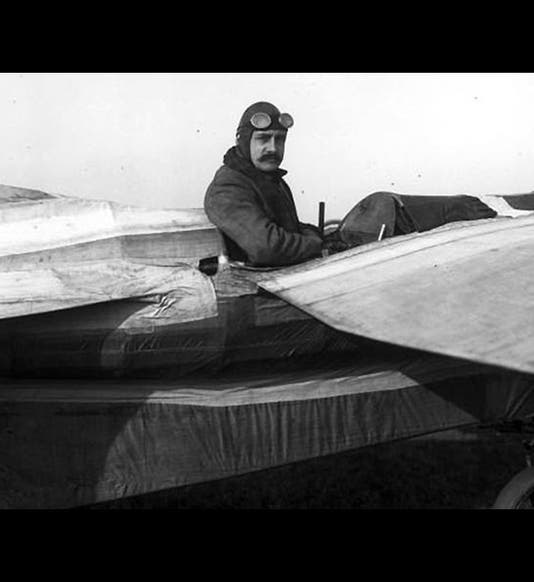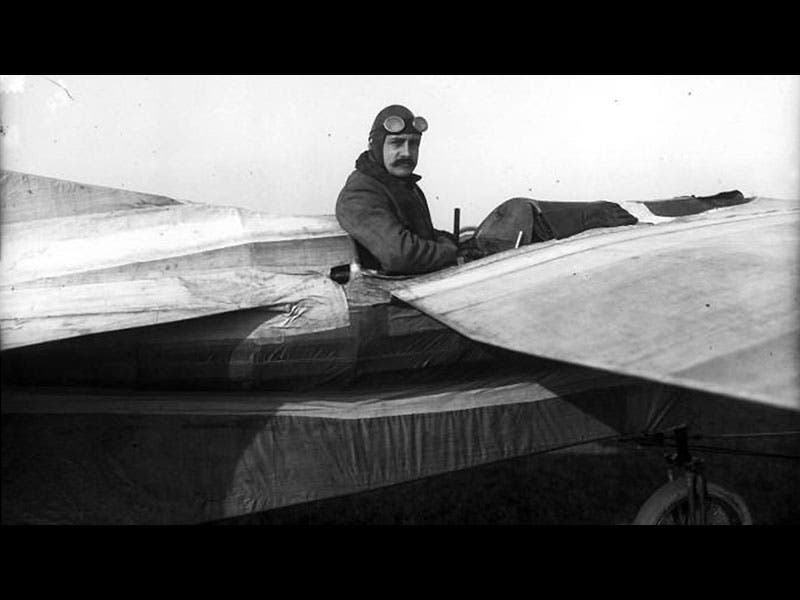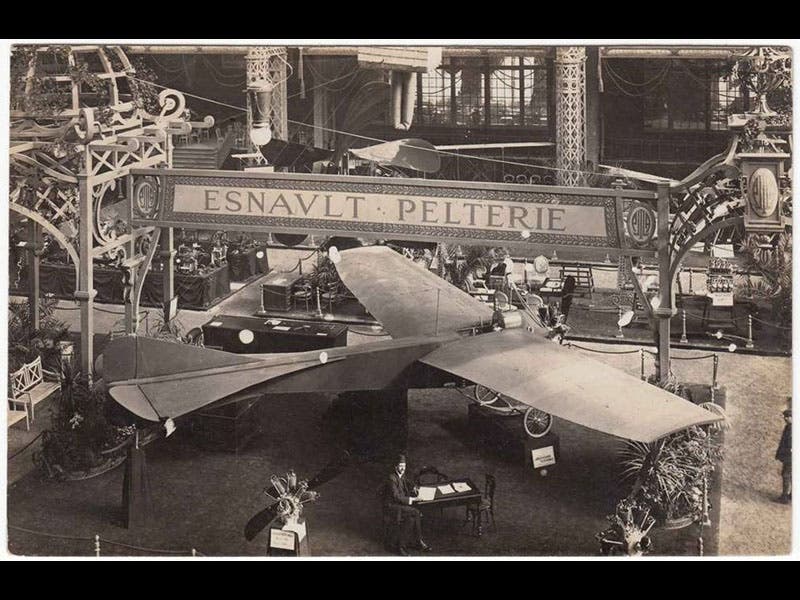Scientist of the Day - Robert Esnault-Pelterie
Robert Esnault-Pelterie, a French inventor and engineer, was born Nov. 8, 1881. Esnault-Pelterie was unique among early aviation pioneers in that he made substantial contributions to both aeronautics and astronautics, the design and flying of planes and the design of rockets. He built his first powered aircraft in 1907, the REP 1, which used ailerons rather than wing-warping to steer, had internally stressed wings instead of the external wire struts of the Wright brothers, and utilized a fuselage with an aluminum frame rather than wood. Esnault-Peleterie posed many times in its cockpit (first image). Unlike the Wright Brothers Flyer, Esnault-Pelsterie's REP 1 looked like what airplanes would come to look like. You can check this out for yourself at the Musée des arts et métiers in Paris, where REP 1 hangs from the rafters (second image).
A serious crash in 1908 ended Esnault-Pelterie’s flying career, although he persisted in building REP aircraft through World War I, but then he turned to thinking about the possibility of space travel. In 1930, he published a book, L'Astronautique, which essentially recognized all the problems faced by designers of rockets and most of the possible solutions--the book not only defined the field, but the book's title gave it a name: astronautics. The French rocket movement paled in comparison to that of the Germans before and during the Second World War, and Esnault-Pelterie never got the opportunities that came the way of rocket designers such as Werner von Braun. But his book is considered to be one of the five most significant early works on rocketry, along with the books of Robert Goddard, Hermann Oberth, and Walter Hohmann., and the seminal 1903 article by the Russian Konstantin Tsiolkovsky.
Esnault-Peltserie is credited with a great number of significant astronautical inventions, although it is hard to confirm some of these. In addition to inventing the aileron and the pilot's joystick--both of these claims seem rock solid--he is said to have pioneered the idea of inertial navigation, to have been the first to devise the gimbal-mounted rocket engine, and to have come up with the concept of aero-braking to slow spacecraft down for planetary landings.
France honored Esnault-Pelterie with a postage stamp in 1967, ten years after his death (fourth image). He was inducted into the International Space Hall of Fame in 1976. We have a first edition of L'Astronautique in the Library, but it is not the copy pictured above (fifth image), which, with both parts in original wrappers, is being offered for sale by a dealer.
Dr. William B. Ashworth, Jr., Consultant for the History of Science, Linda Hall Library and Associate Professor, Department of History, University of Missouri-Kansas City. Comments or corrections are welcome; please direct to ashworthw@umkc.edu.











